Learn how to paint lavender in acrylics using basic acrylic paints and cotton swabs!

Want to learn how to paint lavender in the easiest flower painting tutorial? Then this step by step tutorial (with YouTube video ) will be your pal!
Lavender is one of the easiest flowers to paint which makes it a perfect acrylic painting for beginners in painting.
In this step by step tutorial, you’ll learn how to paint lavender flowers with some simple tools like Q-tips. I’ll also go over some easy acrylic techniques to add some texture into your painting (using items you probably have in your kitchen!).
Oh, and if you’re just starting out with acrylics , you’ll definitely want to go through this Ultimate Beginners Guide: How to Paint with Acrylics. It goes through most things you’ll need to know when starting out.
More Easy Flower Painting Ideas
Looking for more [ beginner level ] easy flower painting ideas? Here are some fun flower paintings to try: daisies, roses, hydrangeas, sunflower, 6 easy flower painting techniques, and butterfly on a sunflower.
And if you’re looking for more spring blooms to paint check out this 60+ spring painting ideas.
Now, let’s get started and learn how to paint some simple and gorgeous lavender flowers with Q-tips!
Lavender Flower Painting: Materials and Supplies
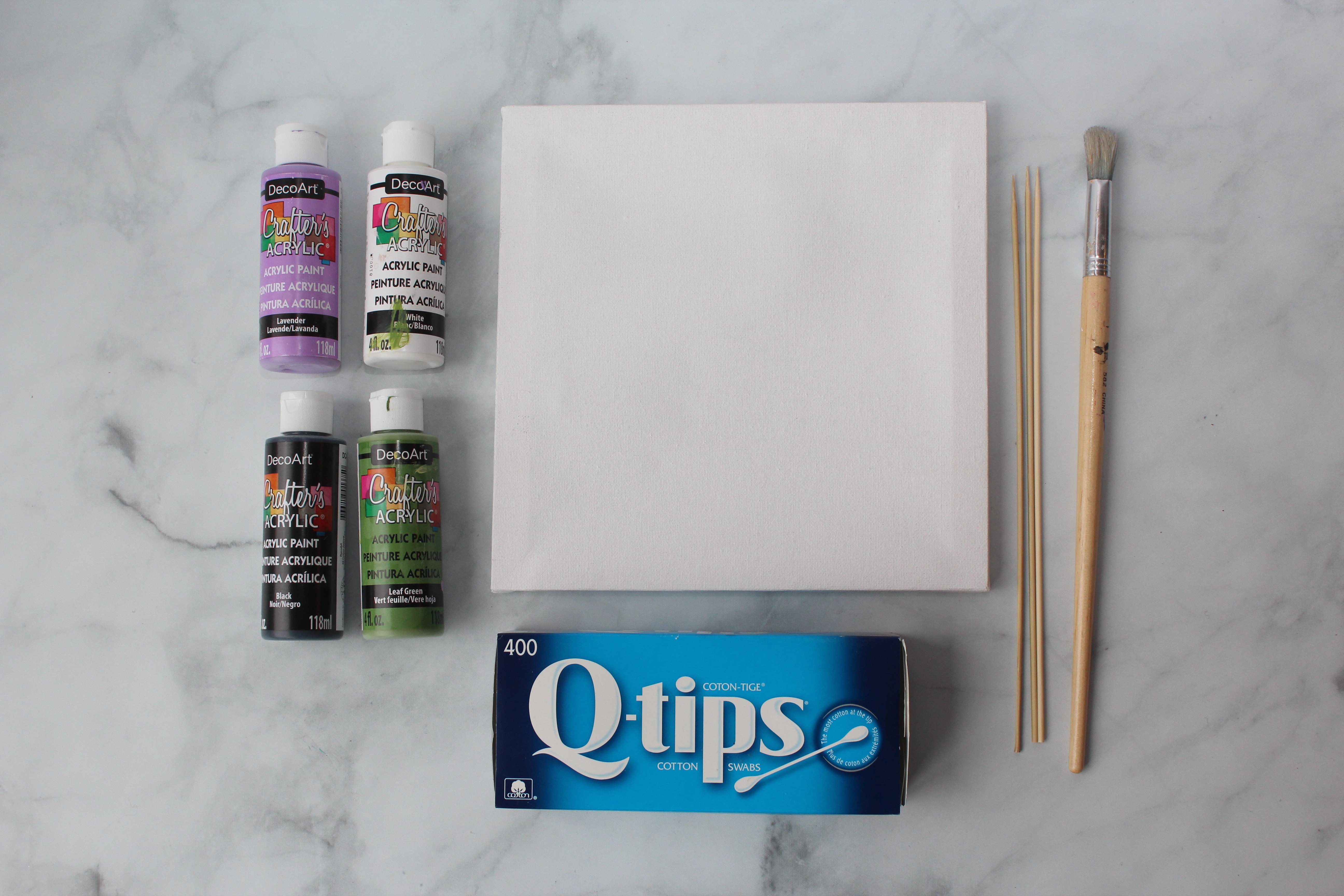
1. DecoArt Acrylic Paints in African Violet, Lavender, Leaf Green, White, and Black
5.Cup of Water
6. Paper towel and salt (for texture)
7. Qtips (cotton swabs)
8. Paper Plate or pallet to mix paint
9.Spray bottle filled with water
How to Paint Lavender Flowers – Step-by-Step Tutorial
Step 1
Follow along with the full-length YouTube tutorial here if you prefer video instruction (plus I’ll share a few extra tips along the way).
Step 2
Lightly spray your canvas with some water. Not too much water, you don’t want it to be pooling or rolling down your canvas. You just want to moisten the canvas so the paint glides across smoother in the next step. (Optional)
Step 3
Add a few drops of white acrylic paints straight onto your canvas, along with 3-4 drops of black paint (focusing on the outer edges). Black is a very strong pigment, so a tiny bit goes a long way.
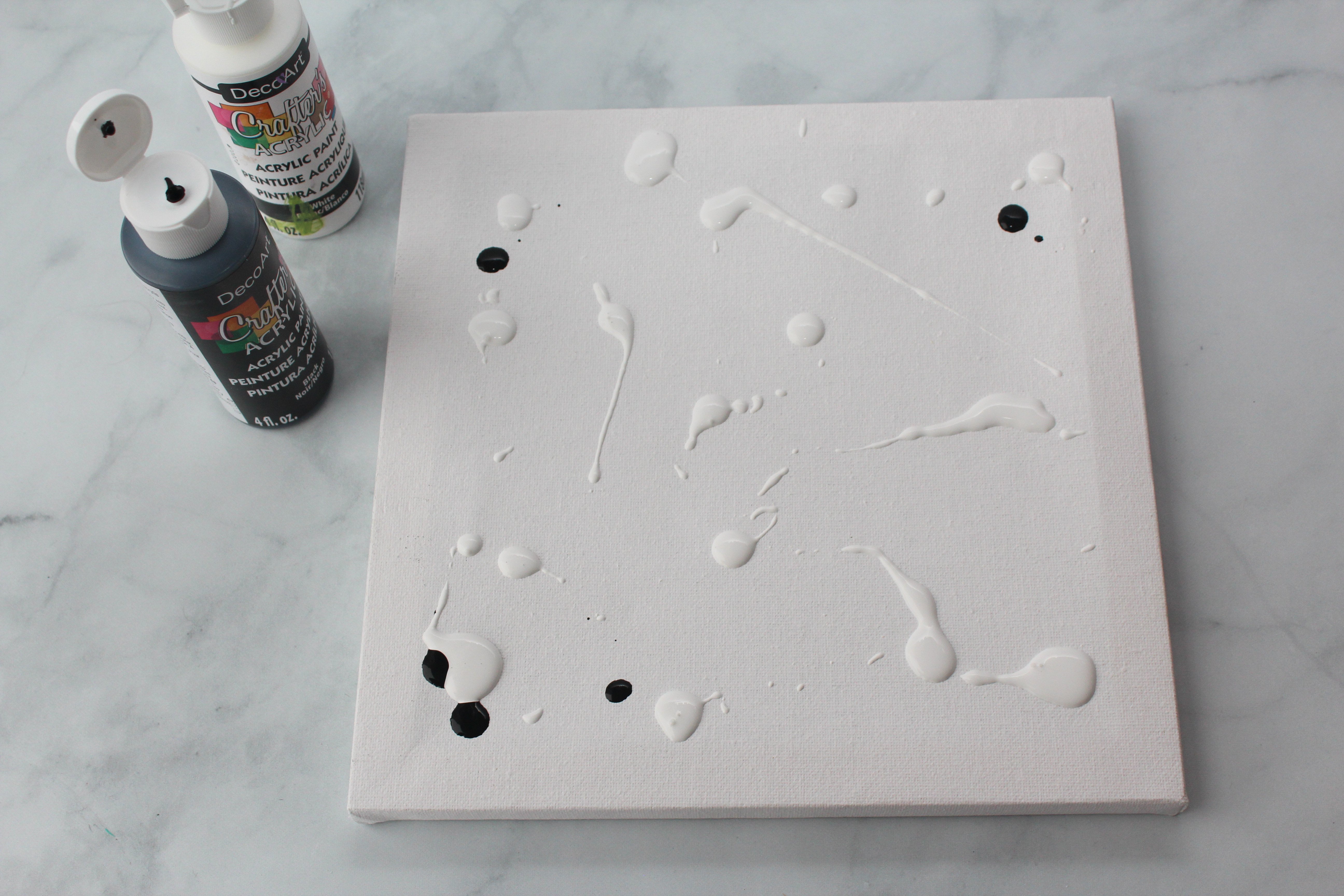
Step 4
Using a medium size paintbrush, use long vertical strokes to blend your white and black paint.
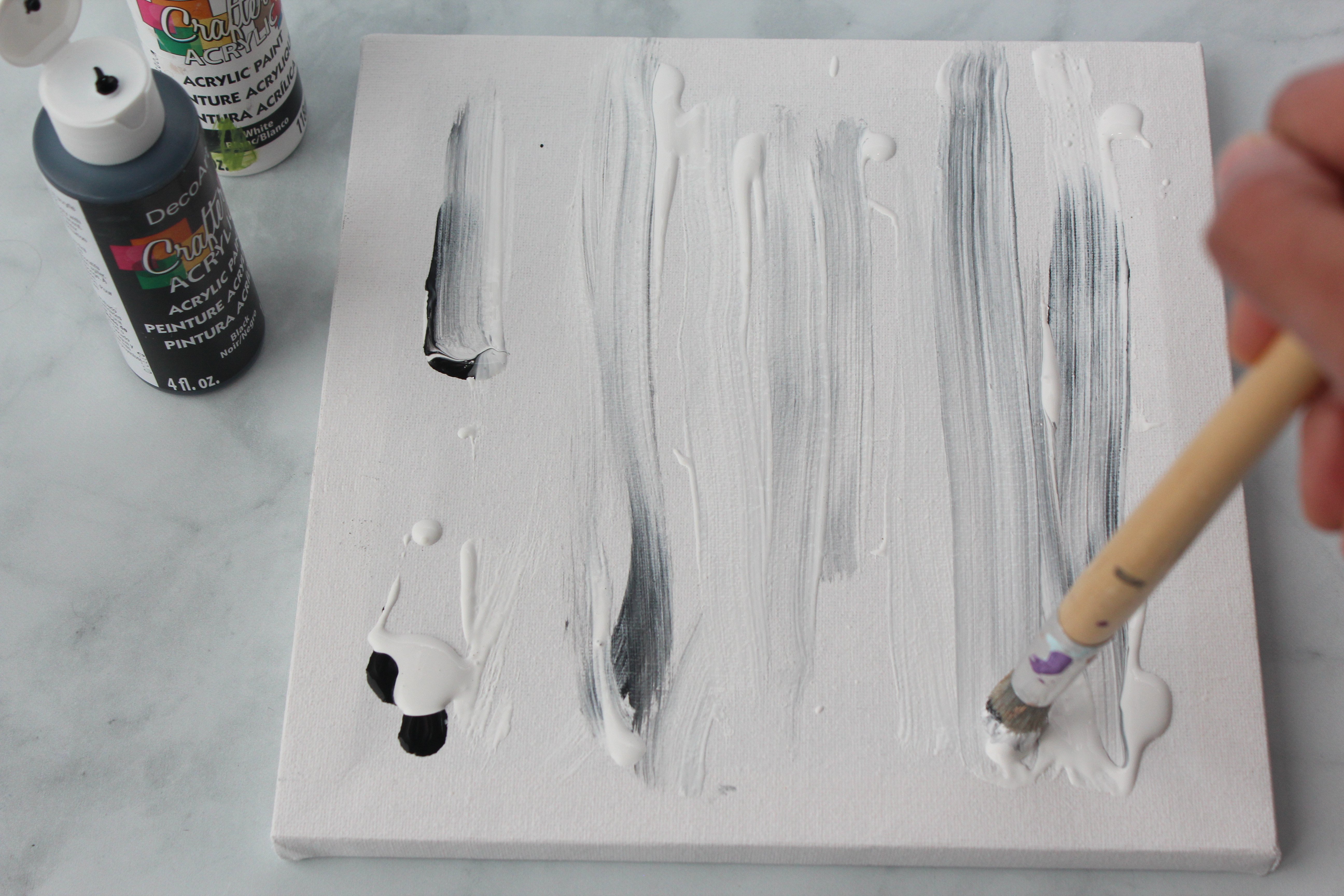
Step 5
If your grey background is too light after this step you can add in more black and re-blend. Its easier to make make your background darker, but harder to lighten it up after its too dark. So its best to add a drop or 2 of black at a time and gauge your results.
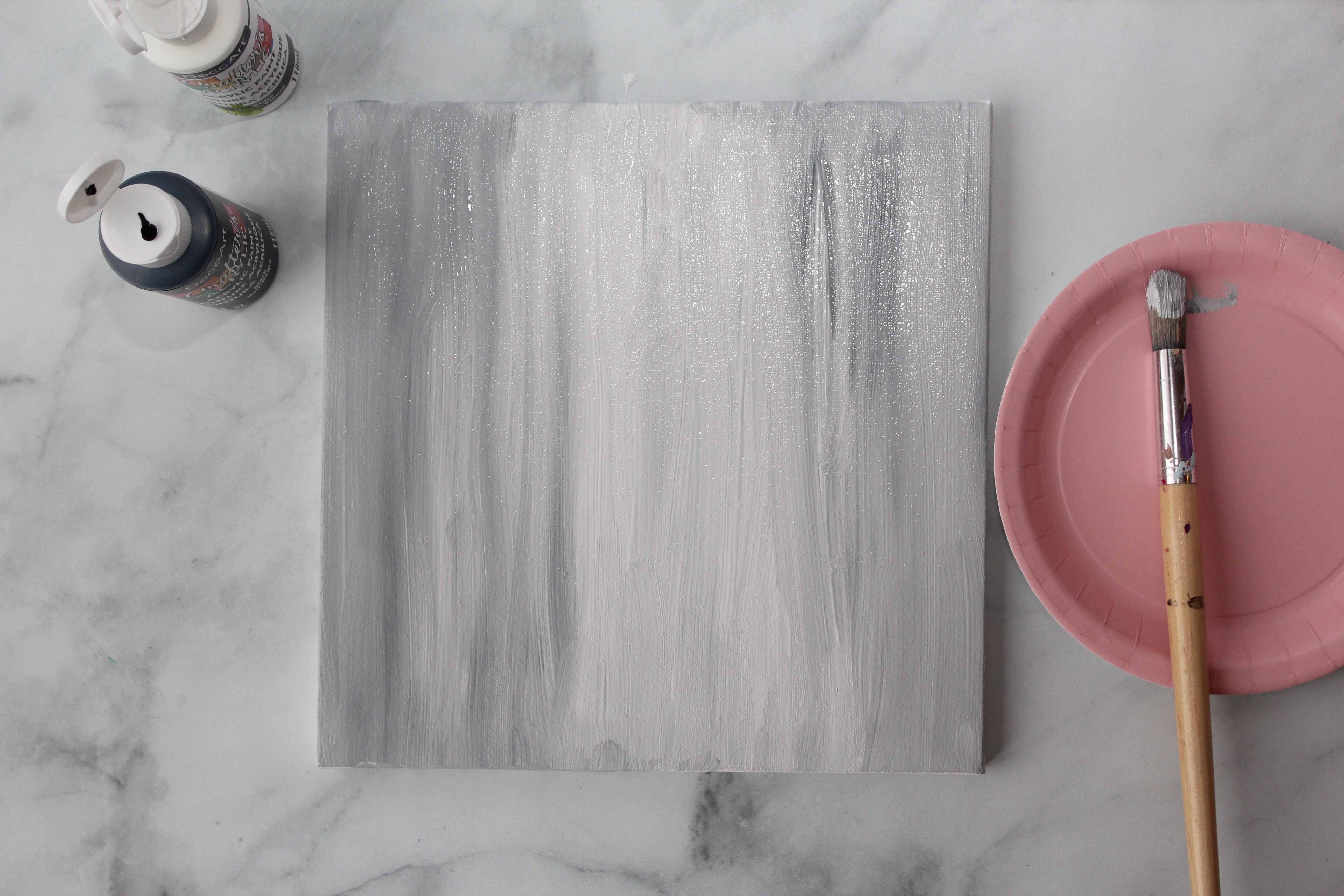
Step 6
To add a bit of texture to the top portion of the painting (the bottom portion will be covered with flowers), sprinkle some salt (the chunkier the grains of salt the better) into the wet paint. Once the paint dries the salt will add a nifty “bumpy” texture look to it.
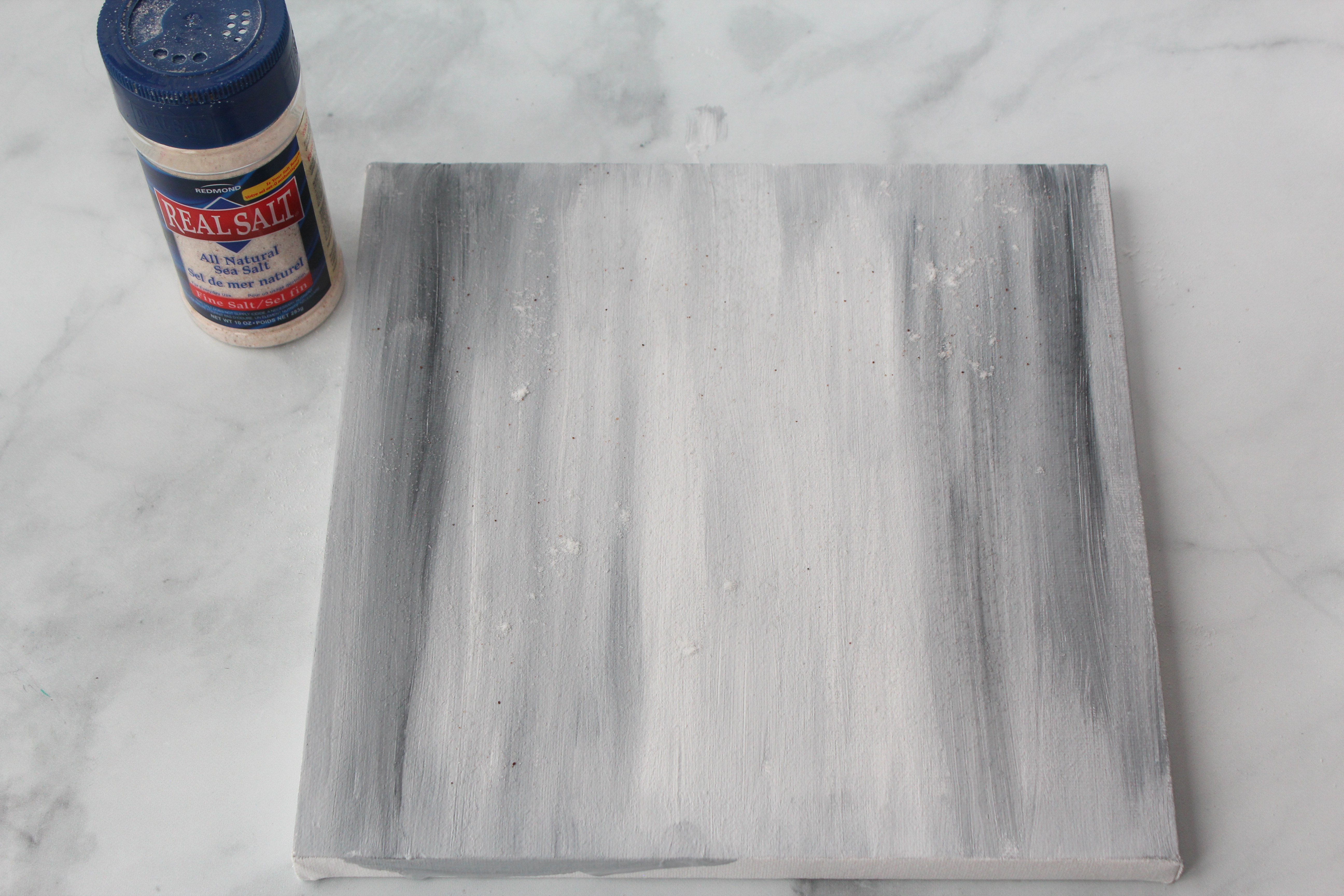
Step 7
(Optional) Taking a paper towel (preferably one with a pattern design on it), dab on a couple drops of white pain to create some extra texture in some areas. The background will look more interesting with a mixture of textures and paint strokes.
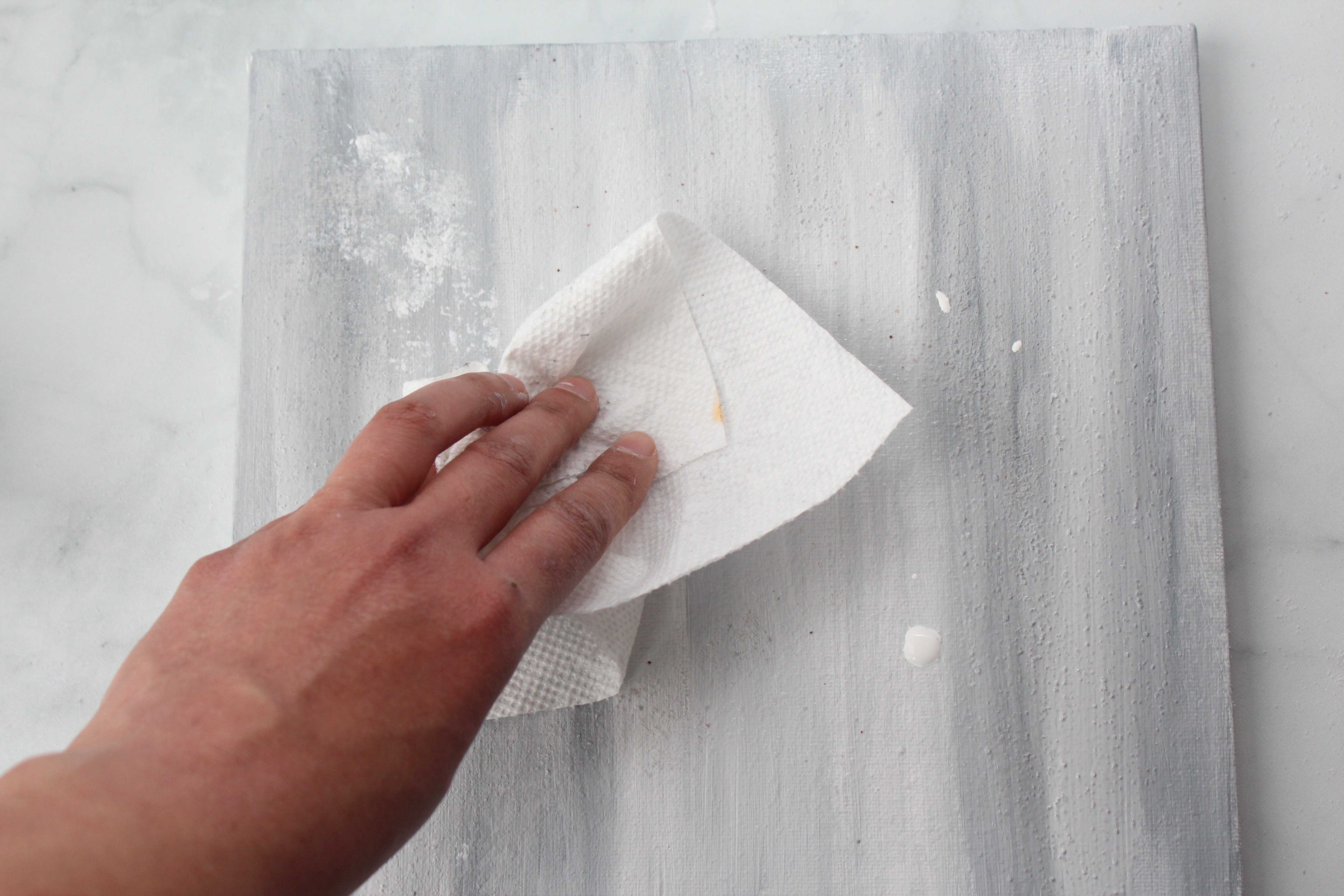
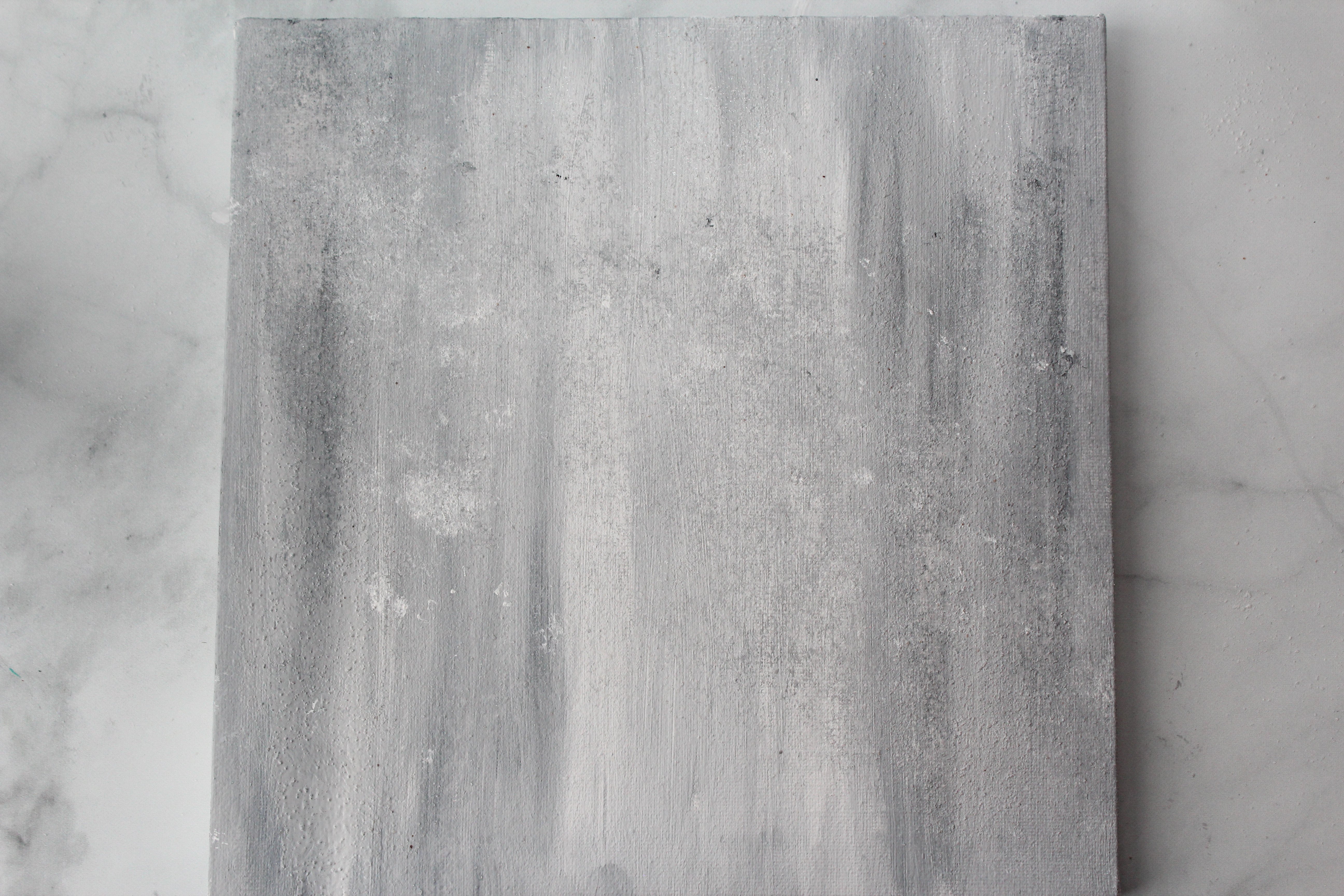
Step 8
Let the background dry completely (should only take a few minutes). To speed up drying, use a hair dryer on medium heat.
Once the background is dry its time for some flowers! First off we’ll do the stems. Add some green paint into your pallet or a paper plate.
Using a clean brush, paint some green onto your wooden skewers. (Alternatively you could use the handle of a long paintbrush, instead of the skewer). Press the skewer (paint side down) onto the canvas. Life up the skewer to see your green stem. Nifty!
Also don’t worry if the stems don’t look perfect, actually it’s better they don’t! The beauty with abstract paintings( like this one )is that we can leave the stress of perfection behind. Don’t worry if your stem are irregular or not perfectly straight, just go with it and focus on the enjoyment of making them!

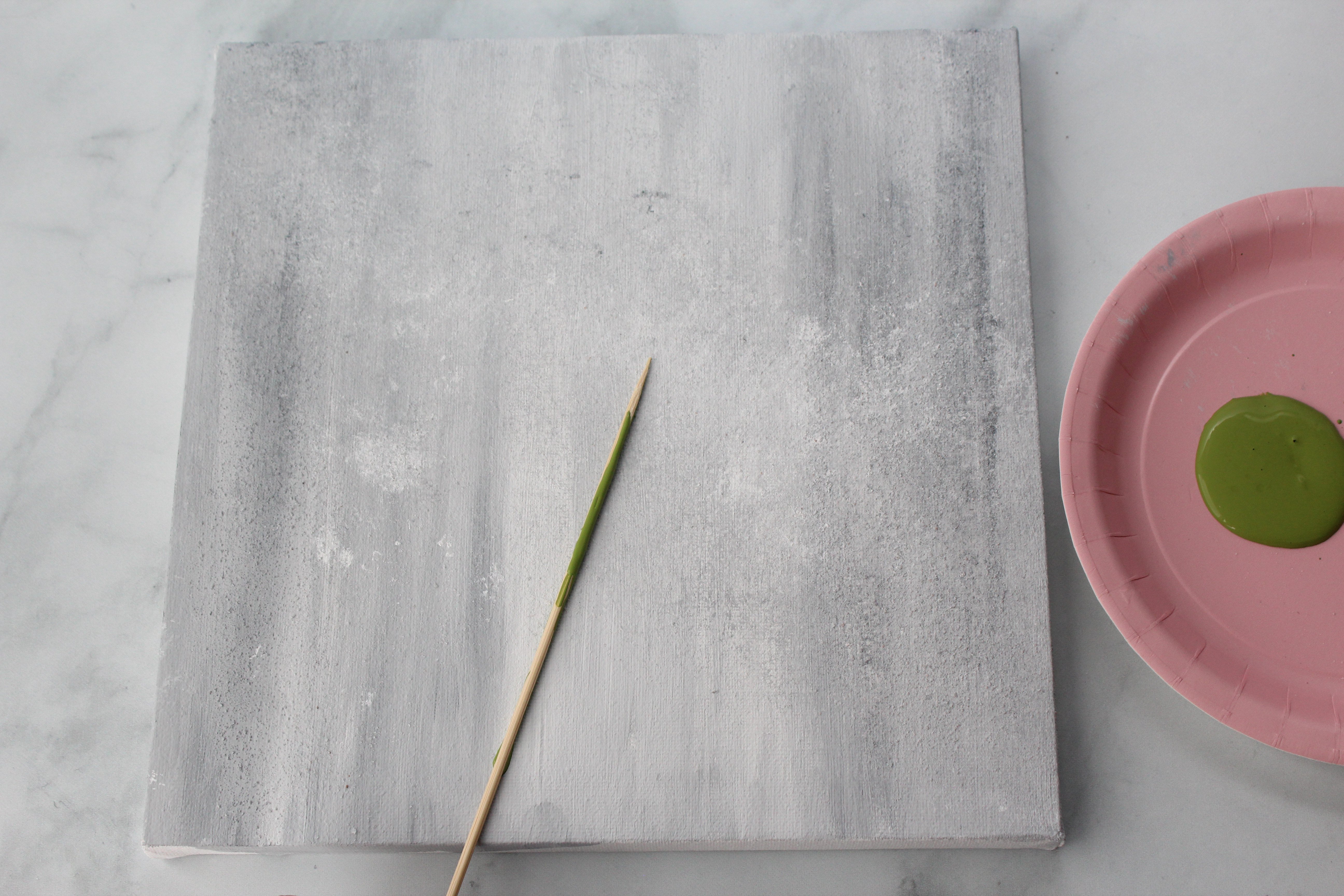
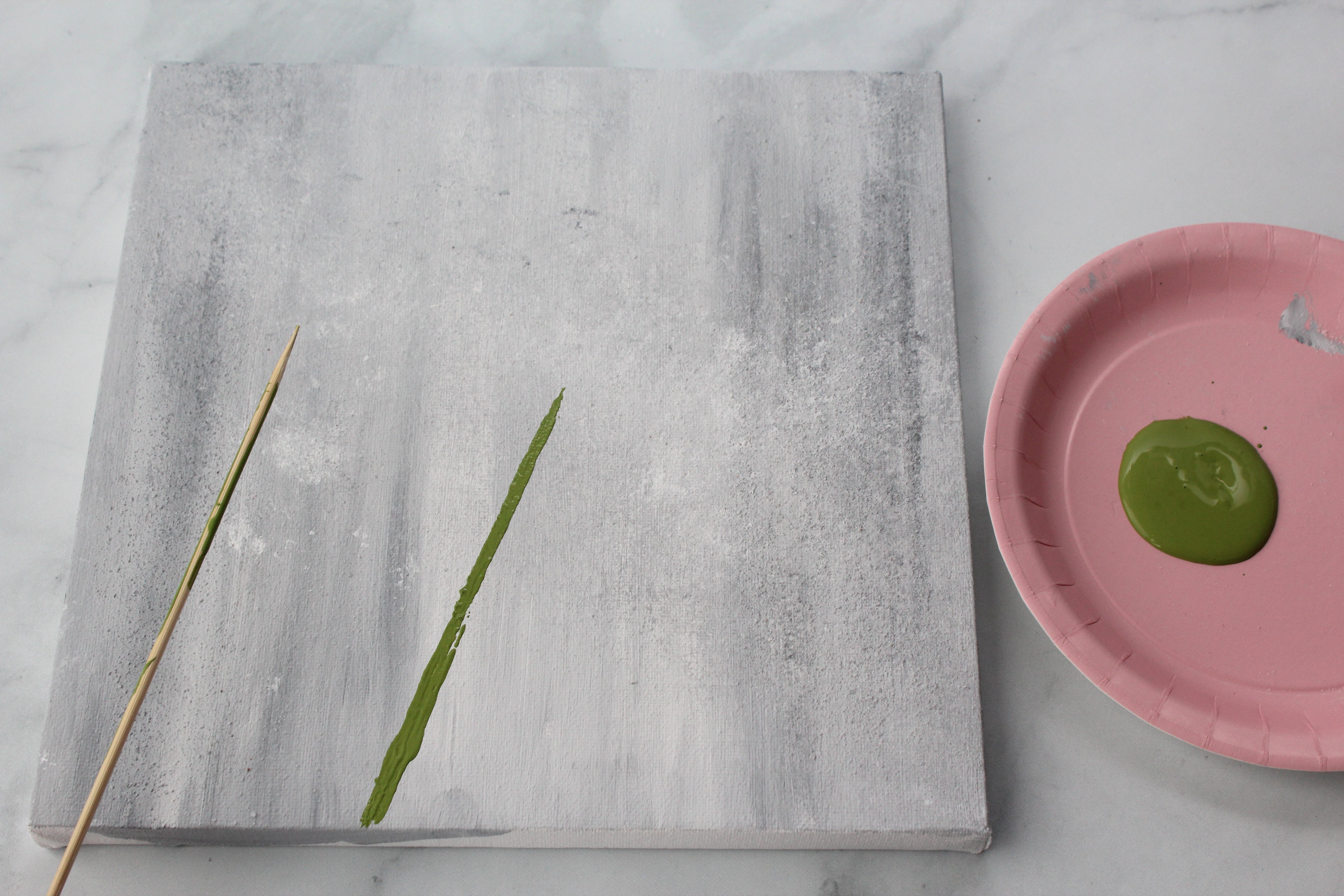
Step 9
Repeat this step with different tints of green (mix in tiny bits of white into green to get different tints). Have different tints of green for your stems will give more dimension. Once your happy with the amount of stems, let the paint dry
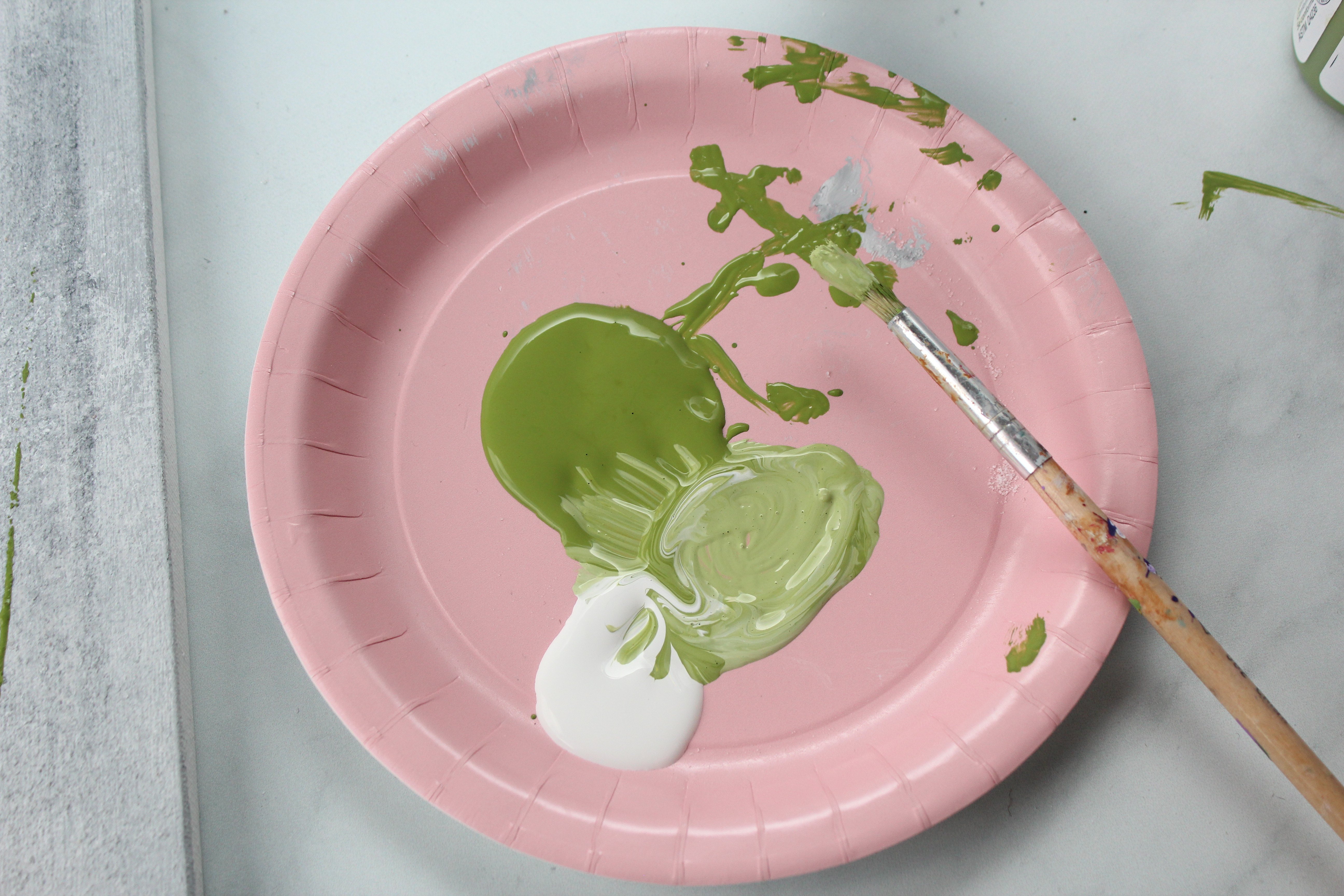

Step 10
Now its time to make our lavender painting with cotton buds or cotton swabs (QTips)! Using your lighter color purple, dab your cotton swab in the paint and start dotting them around some stems to form the petals of the lavender flower.
Repeat this step to form all your lavender flowers, and let dry.

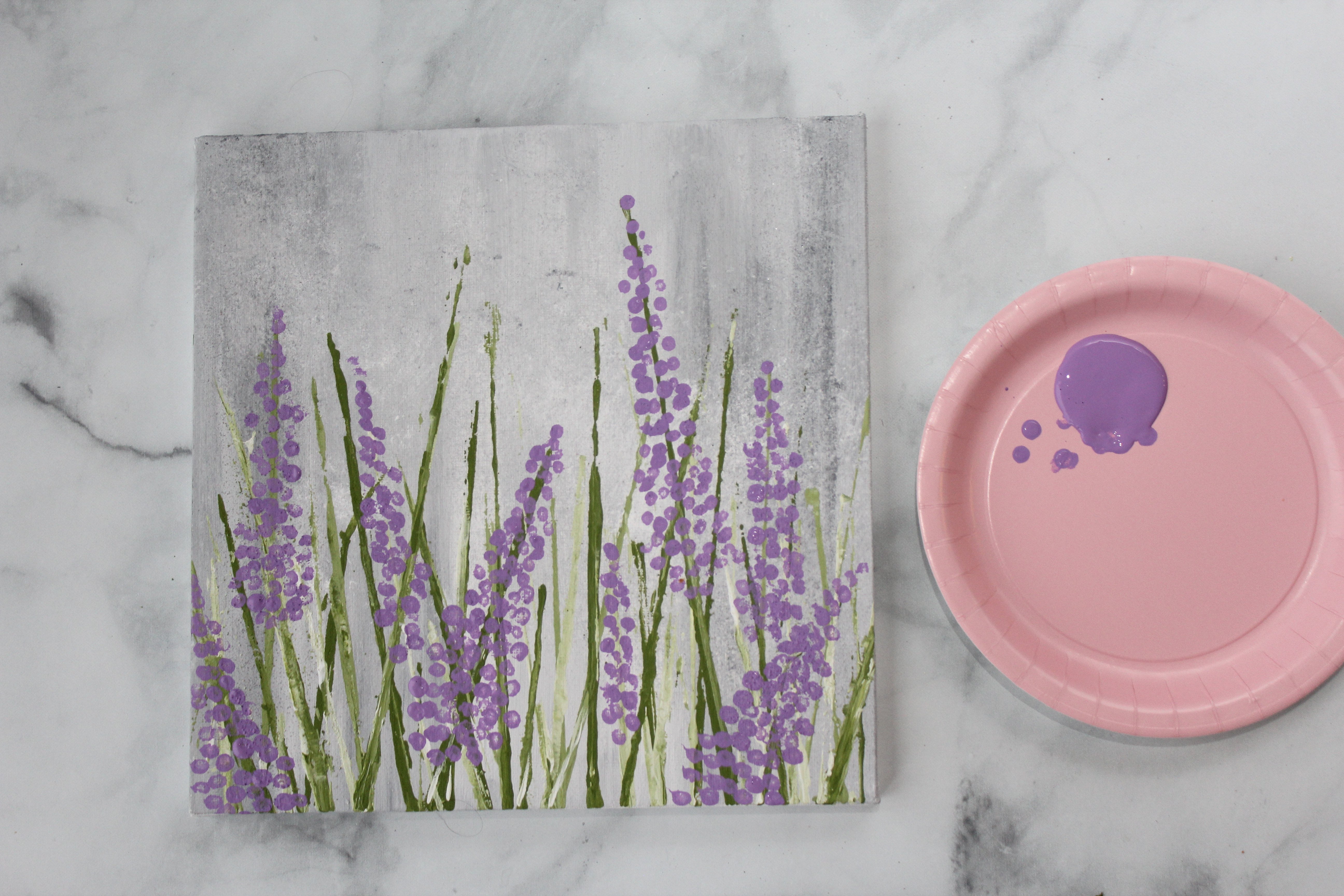
Step 11
Once dry, you are going to take your darker purple color and using a clean cotton swab create some dots over top the lighter petals on the lavender flowers. Let dry


Step 12
Now your going to create a lighter purple tint for your highlights as follows: Take some of the light purple paint and mix it in with equal amount of white paint. This will create a very light purple paint which will be great as a highlight on the petals. Using a clean cotton swab, dab this highlight color on the lavender flower petals.
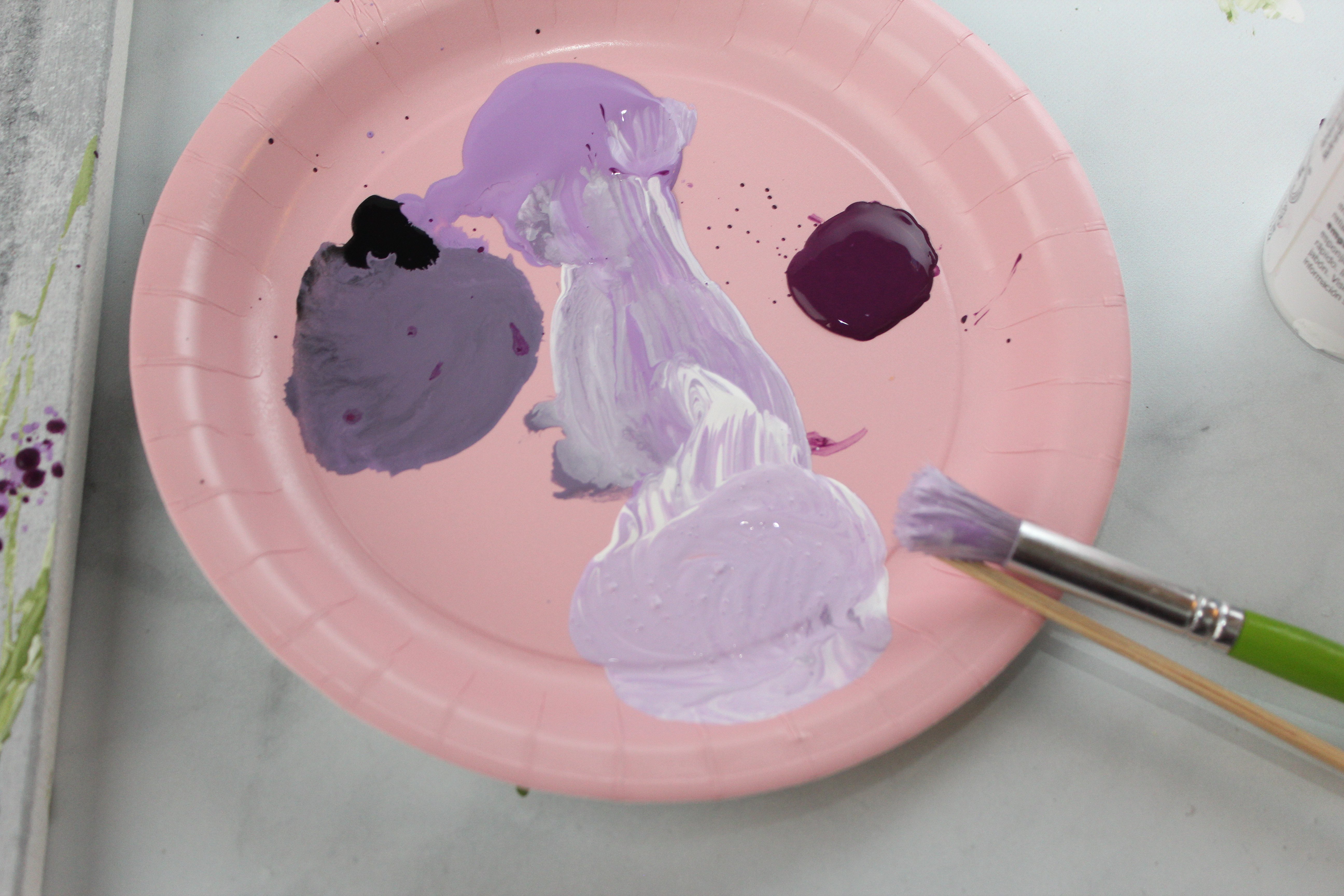
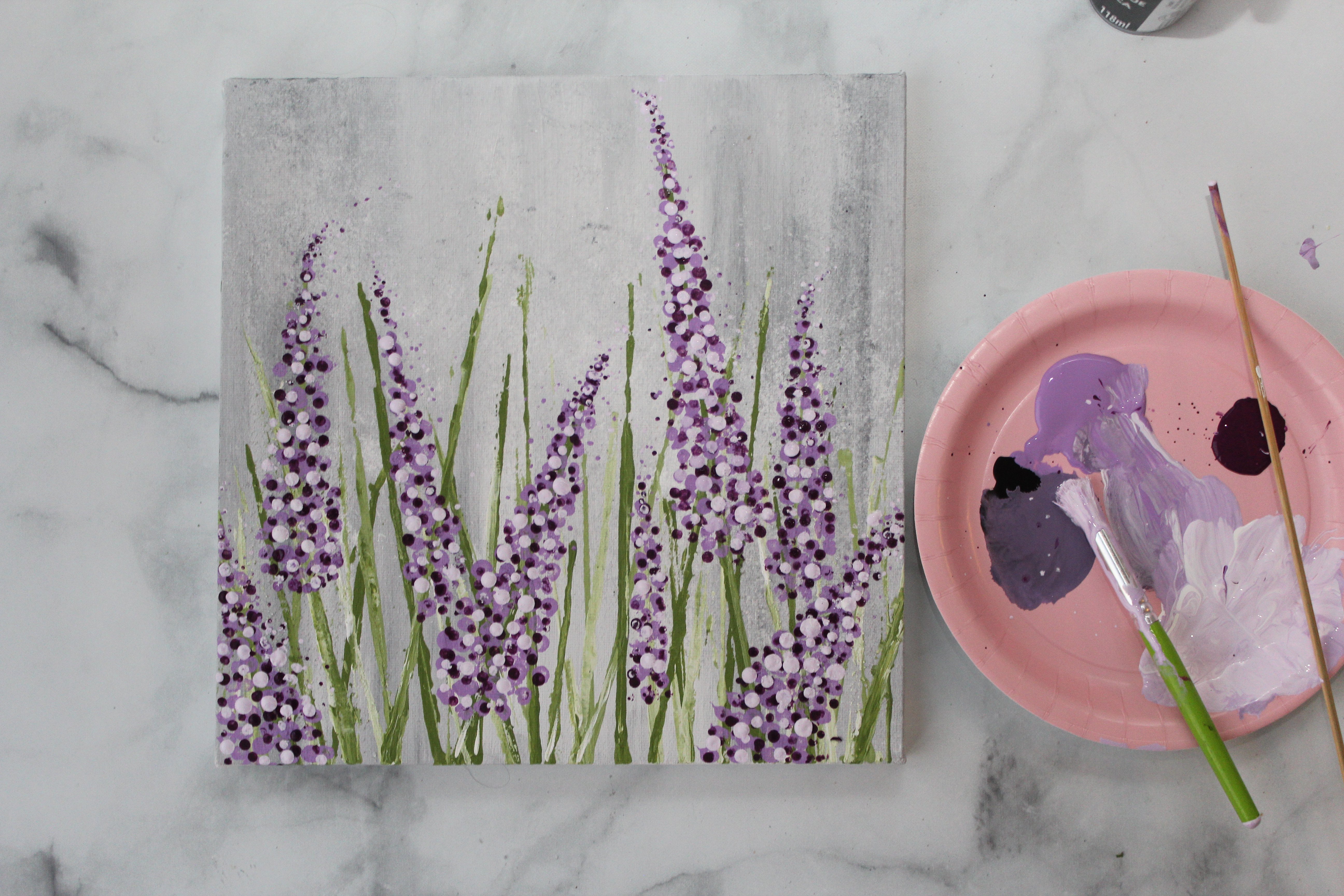
Let your painting dry and your done!
And don’t forget…After all your hard work, sign your painting! And make sure you pat yourself on the back for a job well done! Your gorgeous, tranquil masterpiece is complete, and you have learned some acrylic techniques and color mixing tricks to boot! You’re rockin those acrylics- can’t wait to see what you create next!
The beauty with this lavender painting technique is you can use it on a variety of surfaces like on these glass mason jars, Hydro Flask water bottles, painted rocks, and even pottery projects like mugs.

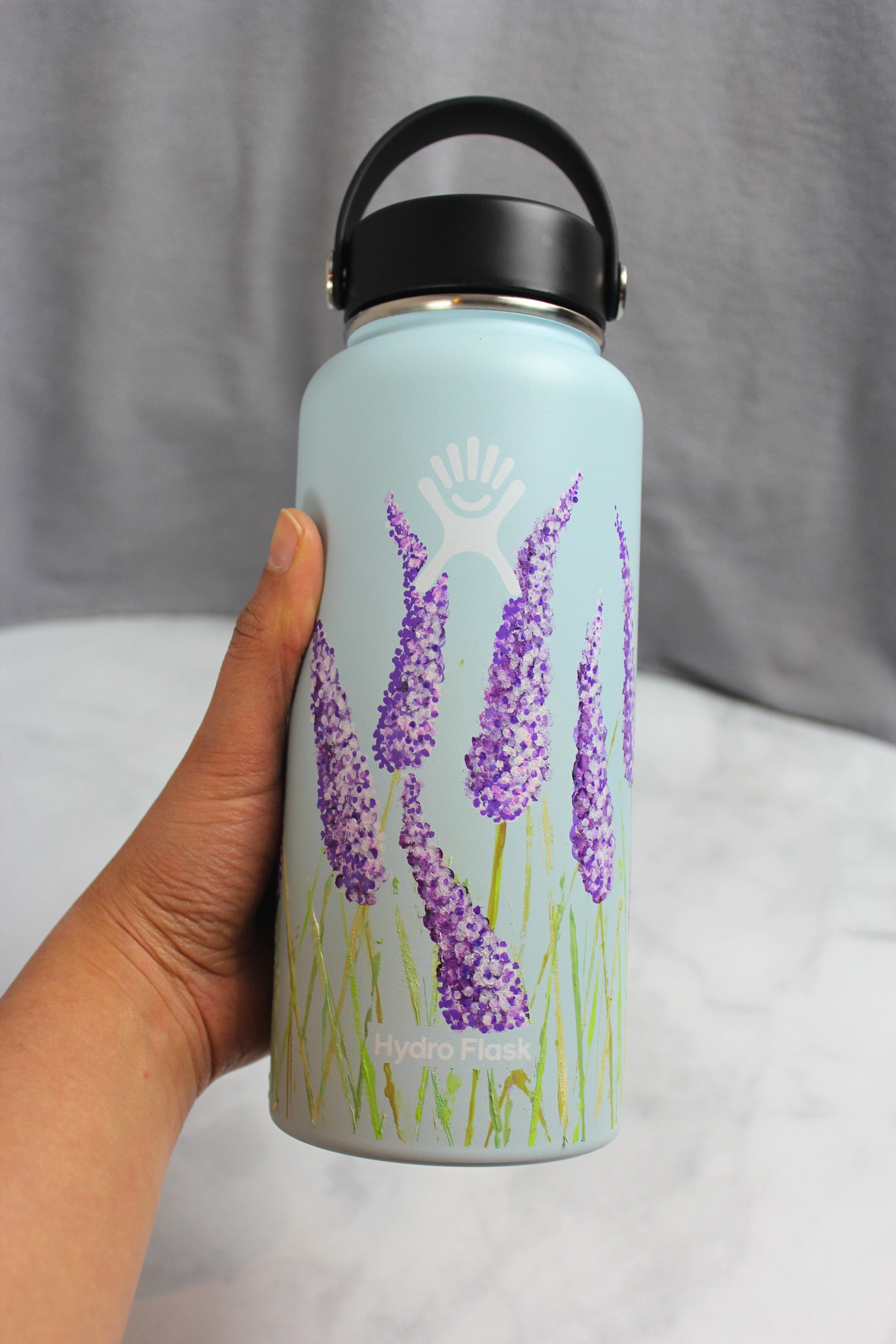
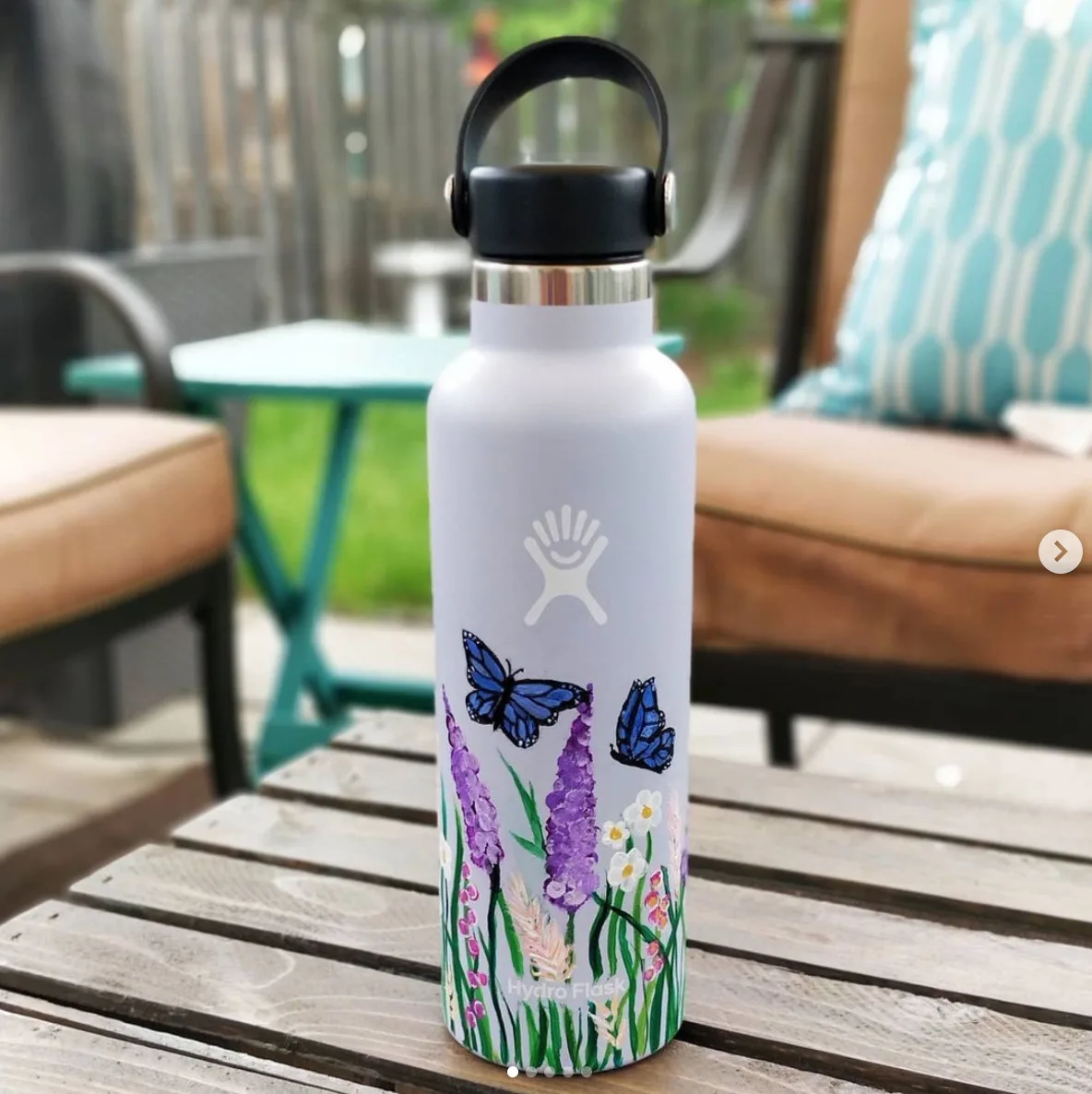

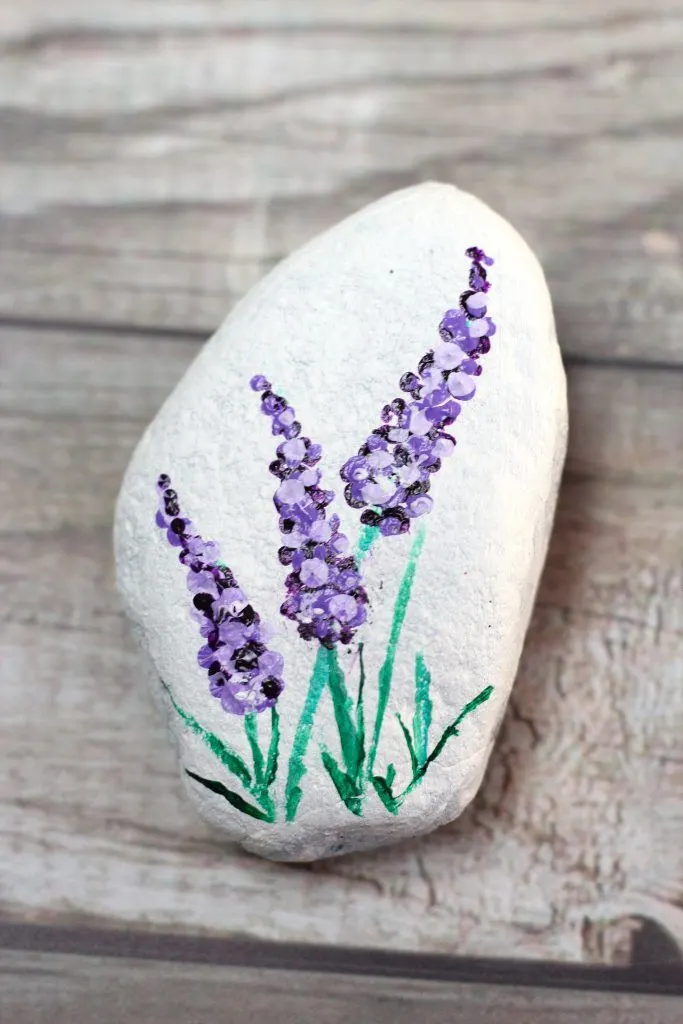
Here’s some extra pictures of the finished piece, hope you enjoyed this tutorial!
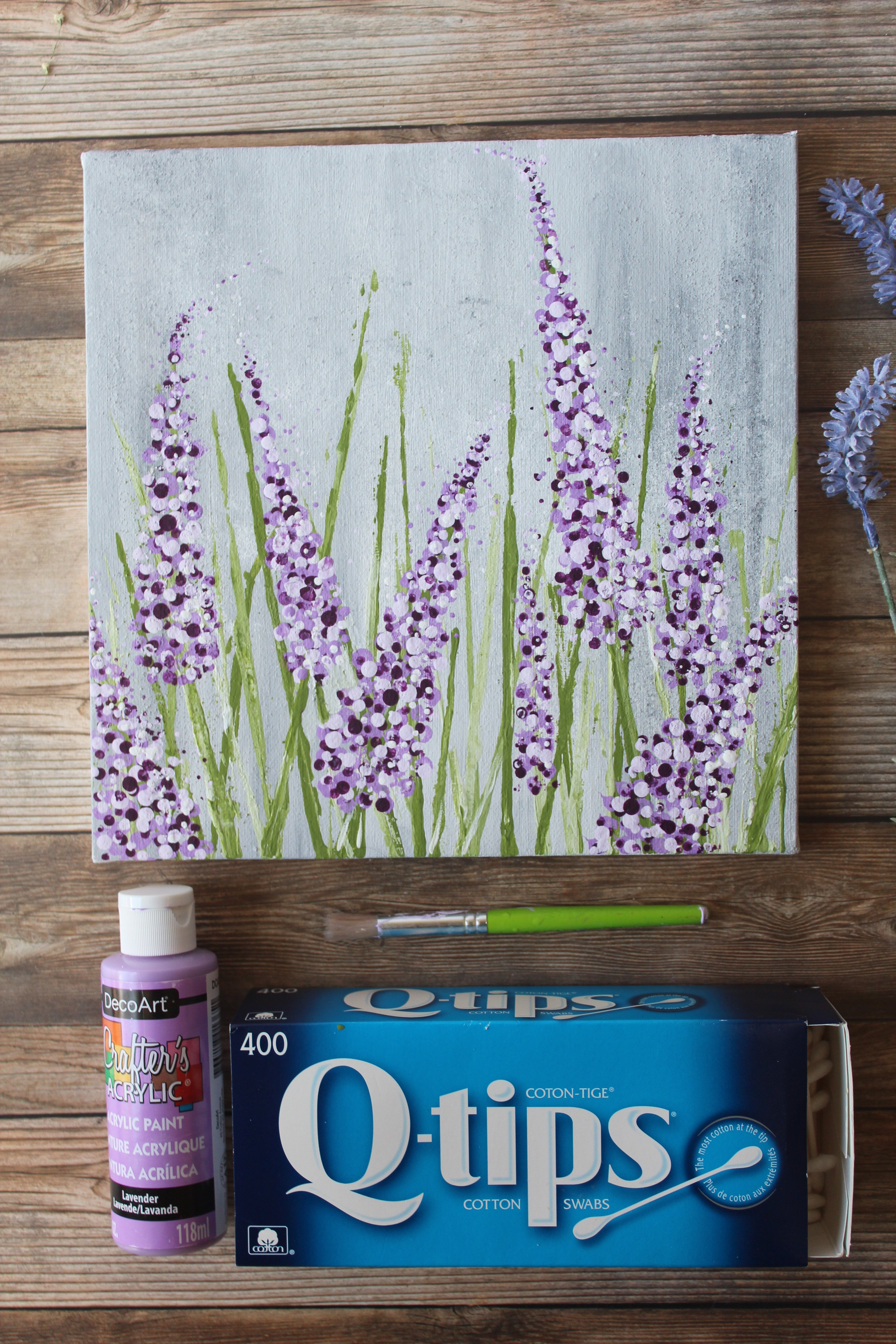
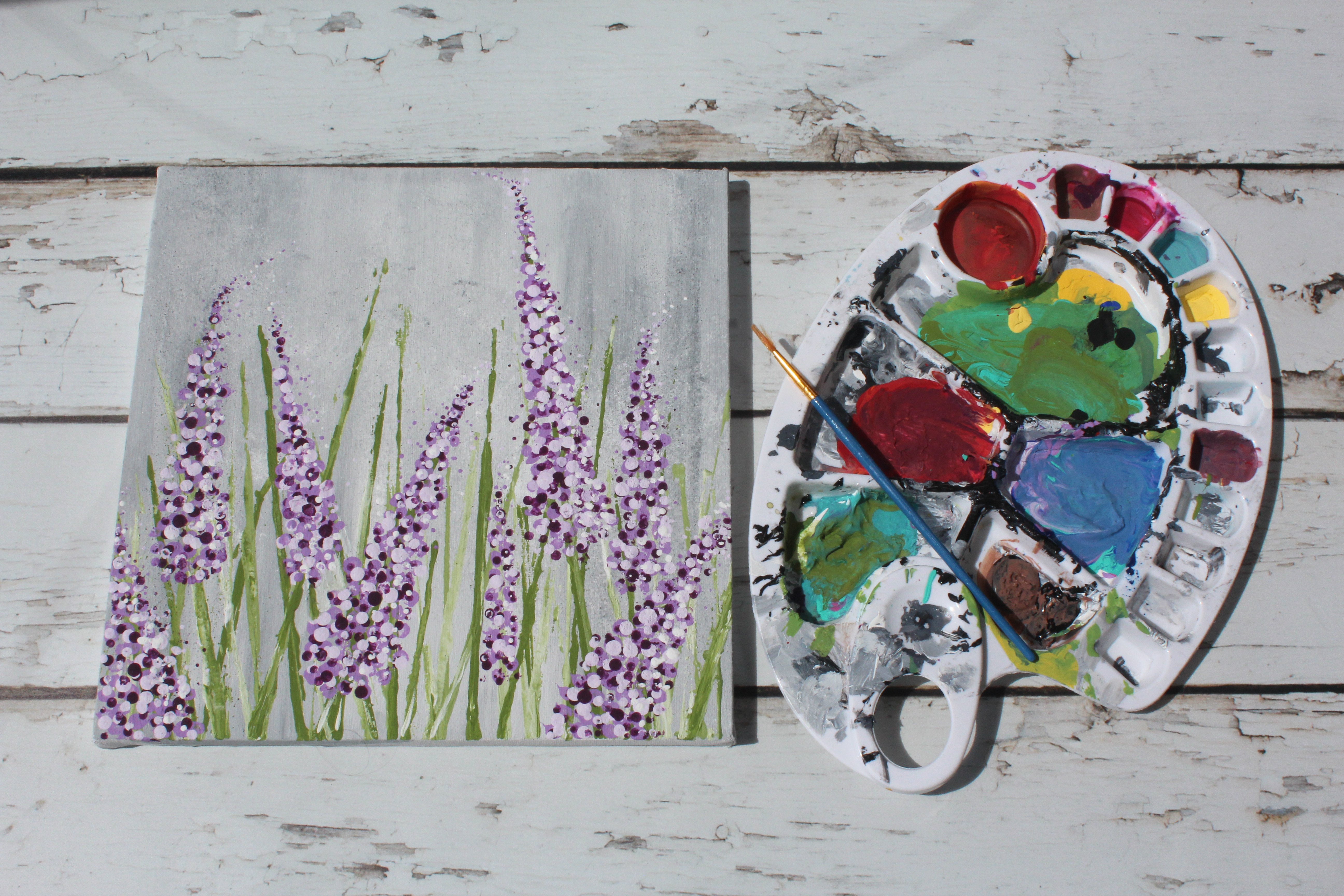
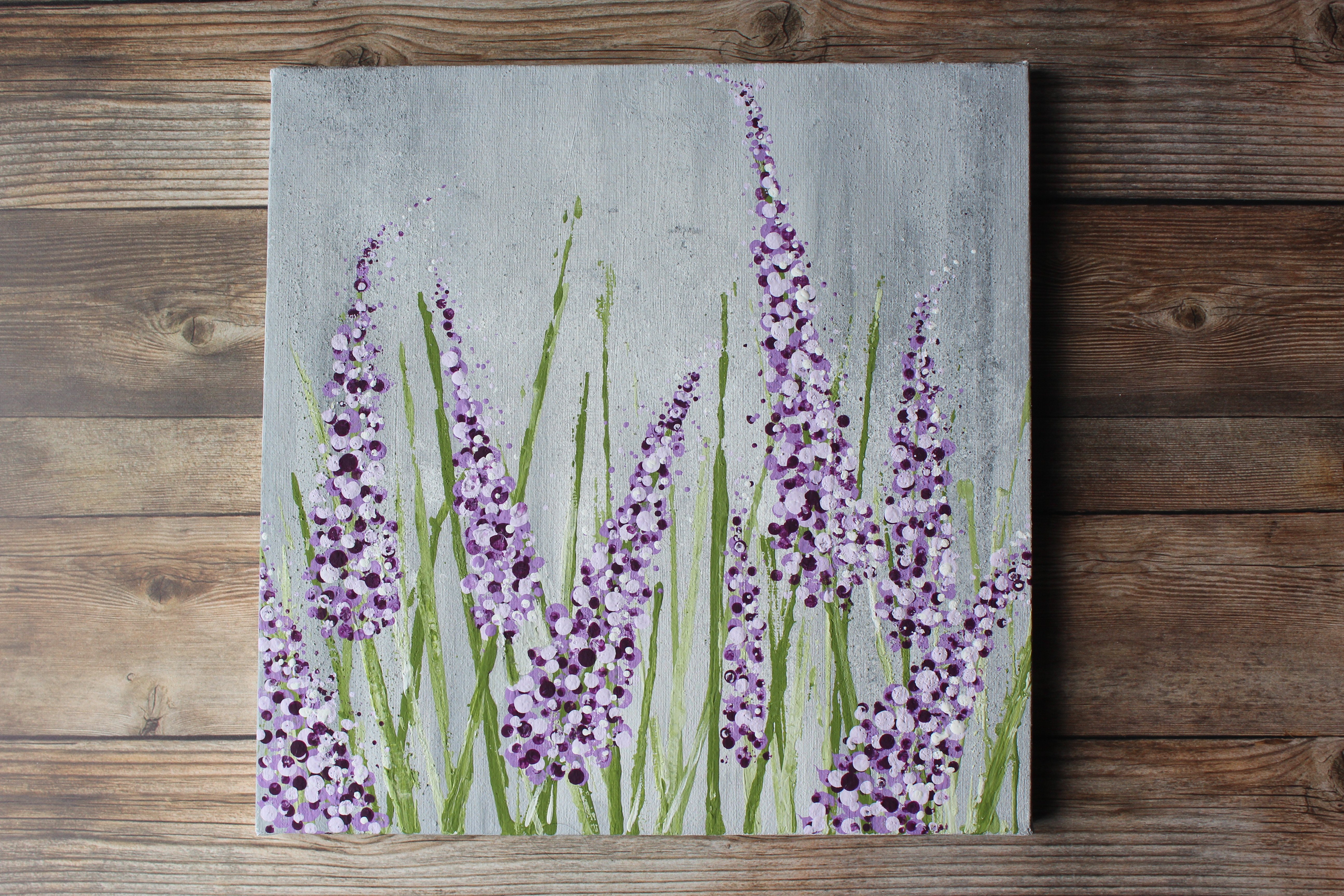
I would absolutely love to see your lavender painting, so if you’d like to share, pop on over to my Facebook group and post your art!
And, until next time, stay nifty & creative!
<3
Jasmine
If you liked this tutorial, please pin it!
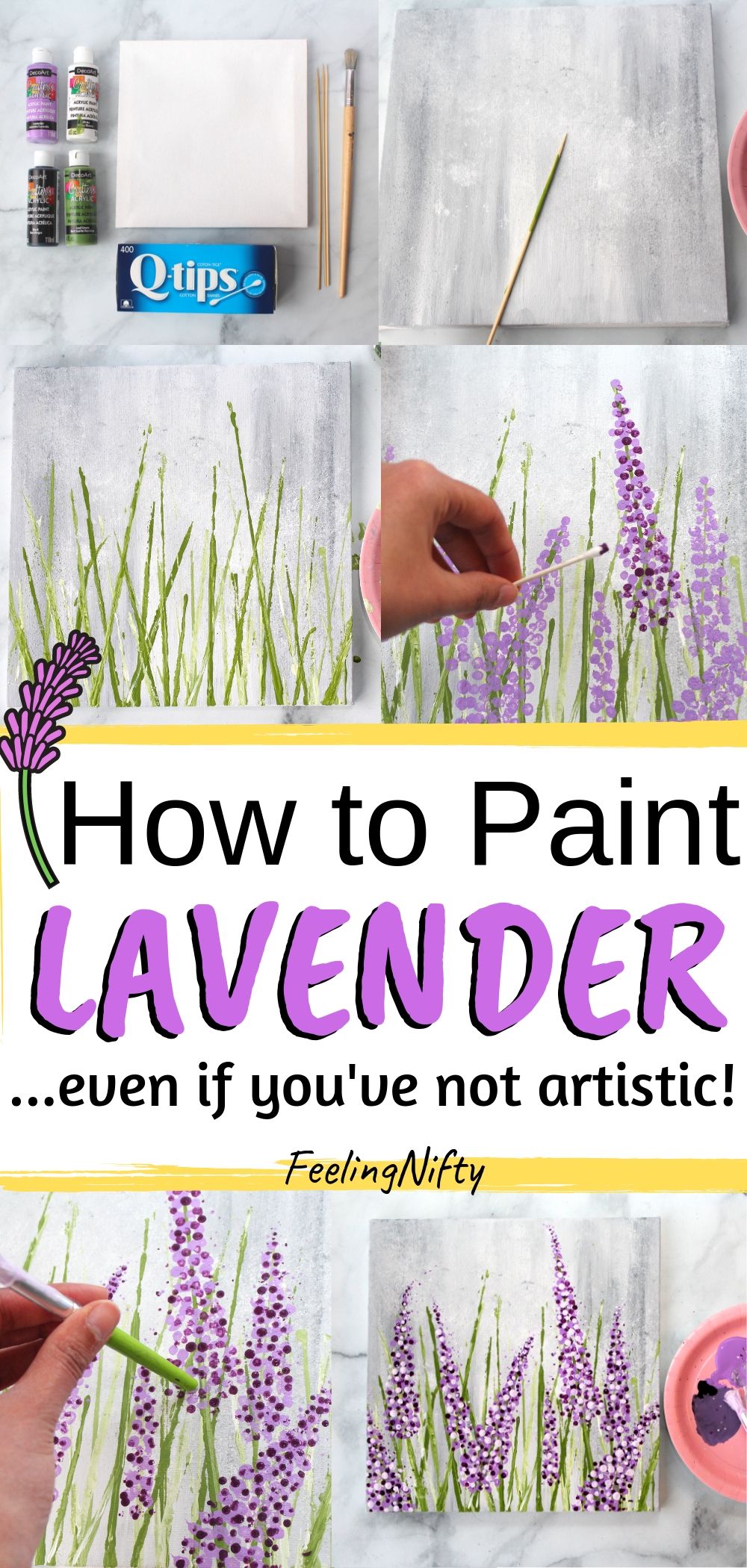
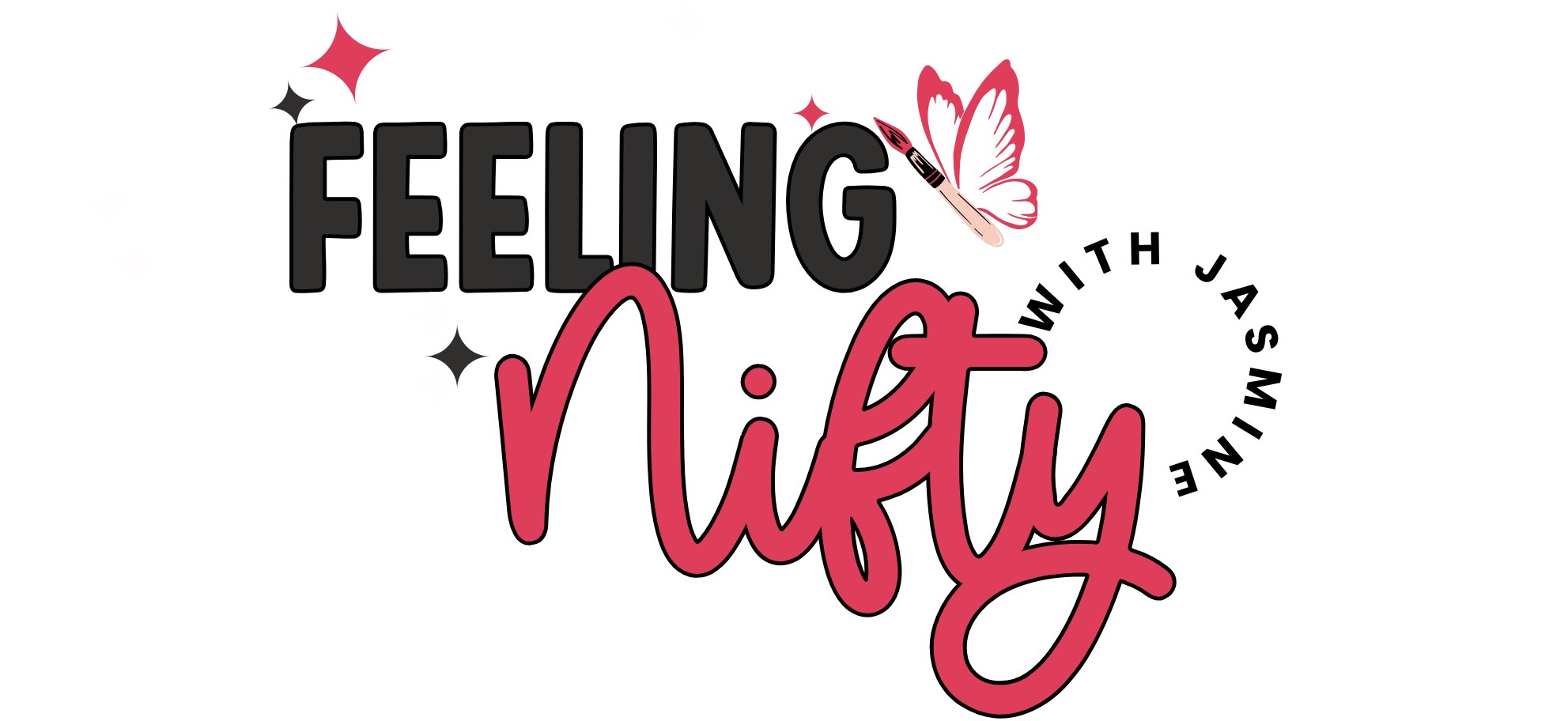
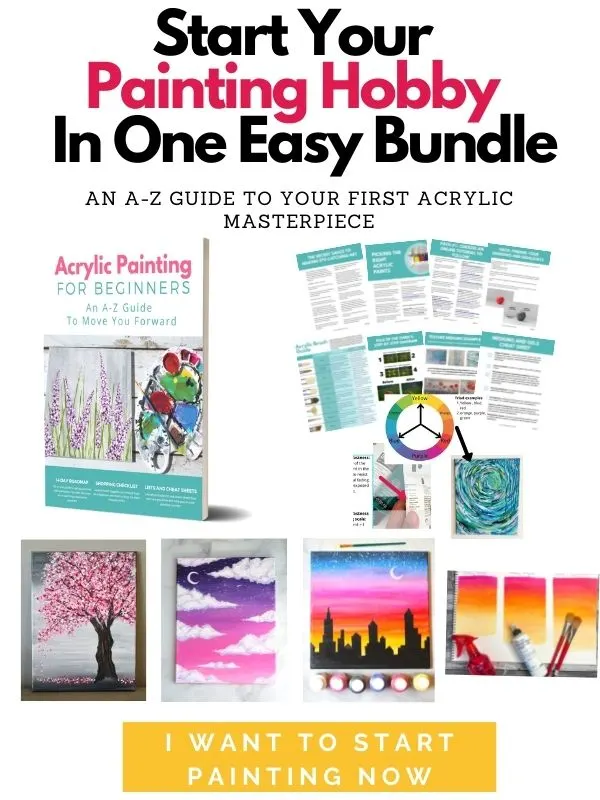
Patricia
Monday 13th of November 2023
Loving your tutorials! Already did the sunflower and I just love it! Next one is going to be this one but I'm still looking at possibilities for other colors for the background... blue, yellow? So many choices! Thank you+!
Jasmine Dhillon
Wednesday 15th of November 2023
You don't even know how much that means to me Patricia <3 Thank you so much for taking the time to not only paint the tutorials but sharing your experience with me. This lavender painting is very special and meant to signify the love of moms. It personally reminds me of the best moms I've had the fortune to have in my life. I can tell you are a true artist, so very proud of you! As for the color backgrounds, the artist inside you knows. Both are wonderful colors, you could paint with both of them as an idea.
keep painting and much love, Jasmine
Taylor Whitehorse
Friday 1st of September 2023
I painted it on a small canvas and it turned out awesome!
Jasmine Dhillon
Tuesday 9th of January 2024
That's so awesome to hear Taylor!! Thank you for taking the time to let me know :)
Cheers, Jasmine
Laurel
Wednesday 4th of May 2022
So much fun did this for Mother’s Day with my friends.
Jasmine Khinda
Thursday 5th of May 2022
So glad you enjoyed the painting Laurel!!
Cheers, Jasmine
Kathleen
Saturday 17th of July 2021
I am new to painting with acrylics and I find your tutorials inspiring, fun, and easy to follow. Thank you for sharing your talent!
Jasmine K
Saturday 17th of July 2021
Thank you so much Kathleen! And so glad you're enjoying the painting tutorials :)
Shirkey
Wednesday 7th of July 2021
Are your tutorials copyrighted? Can we paint them and sell them? Thanks! Shirley [email protected]
Jasmine K
Saturday 17th of July 2021
Hi Shirkey,
Painting the tutorial and selling your finished painting is fine. Enjoy and thank you for asking :)
Cheers, Jasmine